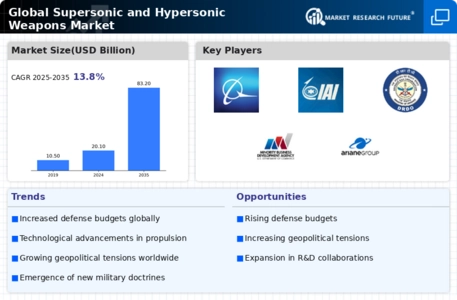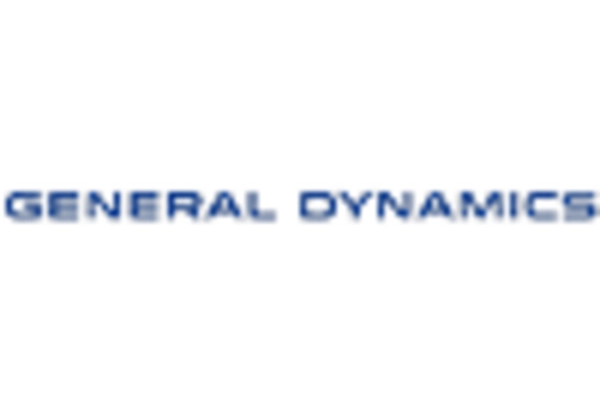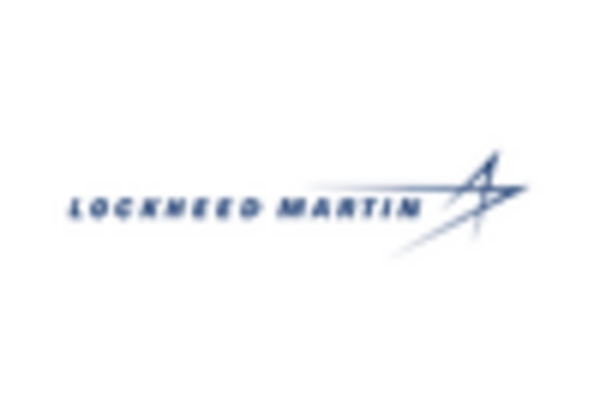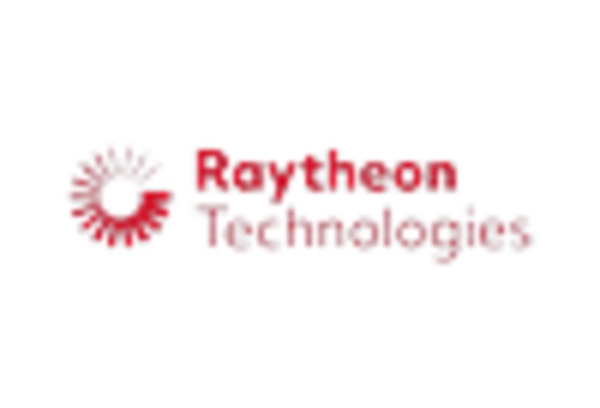-
GLOBAL SUPERSONIC AND HYPERSONIC WEAPONS MARKET, BY Speed
-
Overview
-
Supersonic
-
Hypersonic
-
GLOBAL SUPERSONIC AND HYPERSONIC WEAPONS MARKET, by Type
-
Overview
-
Missiles
-
Hypersonic Glide Vehicles
-
GLOBAL SUPERSONIC AND HYPERSONIC WEAPONS MARKET, by Region
-
Overview
-
North America
-
US
-
Canada
-
Europe
-
Germany
-
France
-
UK
-
Italy
-
Spain
-
Rest of Europe
-
Asia-Pacific
-
China
-
India
-
Japan
-
South Korea
-
Australia
-
Rest of Asia-Pacific
-
Rest of the World
-
Middle East
-
Africa
-
Latin America
-
Competitive Landscape
-
Overview
-
Competitive Analysis
-
Market Share Analysis
-
Major Growth Strategy in the Global Supersonic and Hypersonic Weapons Market,
-
Competitive Benchmarking
-
Leading Players in Terms of Number of Developments in the Global Supersonic and Hypersonic Weapons Market,
-
Key developments and Growth Strategies
-
New Product Launch/Service Deployment
-
Merger & Acquisitions
-
Joint Ventures
-
Major Players Financial Matrix
-
Sales & Operating Income, 2022
-
Major Players R&D Expenditure. 2022
-
Company ProfileS
-
THE BOEING COMPANY
-
Company Overview
-
Financial Overview
-
Products Offered
-
Key Developments
-
SWOT Analysis
-
Key Strategies
-
Kongsberg Gruppen AS
-
Company Overview
-
Financial Overview
-
Products Offered
-
Key Developments
-
SWOT Analysis
-
Key Strategies
-
ISRAEL AEROSPACE INDUSTRIES
-
Company Overview
-
Financial Overview
-
Products Offered
-
Key Developments
-
SWOT Analysis
-
Key Strategies
-
DRDO
-
Company Overview
-
Financial Overview
-
Products Offered
-
Key Developments
-
SWOT Analysis
-
Key Strategies
-
LOCKHEED MARTIN CORPORATION
-
Company Overview
-
Financial Overview
-
Products Offered
-
Key Developments
-
SWOT Analysis
-
Key Strategies
-
Raytheon Technologies Corporation
-
Company Overview
-
Financial Overview
-
Products Offered
-
Key Developments
-
SWOT Analysis
-
Key Strategies
-
Northrop Grumman Corporation
-
Company Overview
-
Financial Overview
-
Products Offered
-
Key Developments
-
SWOT Analysis
-
Key Strategies
-
MBDA
-
Company Overview
-
Financial Overview
-
Products Offered
-
Key Developments
-
SWOT Analysis
-
Key Strategies
-
Tactical Missiles Corporation
-
Company Overview
-
Financial Overview
-
Products Offered
-
Key Developments
-
SWOT Analysis
-
Key Strategies
-
ArianeGroup
-
Company Overview
-
Financial Overview
-
Products Offered
-
Key Developments
-
SWOT Analysis
-
Key Strategies
-
Appendix
-
References
-
Related Reports
-
LIST OF TABLES
-
Global Supersonic and Hypersonic Weapons Market, Synopsis, 2018–2032
-
Global Supersonic and Hypersonic Weapons Market, Estimates & Forecast, 2025–2034 (USD BILLION)
-
GLOBAL SUPERSONIC AND HYPERSONIC WEAPONS MARKET, BY Speed, 2025–2034 (USD BILLION)
-
GLOBAL SUPERSONIC AND HYPERSONIC WEAPONS MARKET, by Type, 2025–2034 (USD BILLION)
-
North America: SUPERSONIC AND HYPERSONIC WEAPONS MARKET, BY Speed, 2025–2034 (USD BILLION)
-
North america: SUPERSONIC AND HYPERSONIC WEAPONS MARKET, BY Type, 2025–2034 (USD BILLION)
-
US: SUPERSONIC AND HYPERSONIC WEAPONS MARKET, BY Speed, 2025–2034 (USD BILLION)
-
US: SUPERSONIC AND HYPERSONIC WEAPONS MARKET, BY Type, 2025–2034 (USD BILLION)
-
Canada: SUPERSONIC AND HYPERSONIC WEAPONS MARKET, BY Speed, 2025–2034 (USD BILLION)
-
Canada: SUPERSONIC AND HYPERSONIC WEAPONS MARKET, BY Type, 2025–2034 (USD BILLION)
-
Europe: SUPERSONIC AND HYPERSONIC WEAPONS MARKET, BY Speed, 2025–2034 (USD BILLION)
-
Europe: SUPERSONIC AND HYPERSONIC WEAPONS MARKET, BY Type, 2025–2034 (USD BILLION)
-
germany: SUPERSONIC AND HYPERSONIC WEAPONS MARKET, BY Speed, 2025–2034 (USD BILLION)
-
germany: SUPERSONIC AND HYPERSONIC WEAPONS MARKET, BY Type, 2025–2034 (USD BILLION)
-
FRANCE: SUPERSONIC AND HYPERSONIC WEAPONS MARKET, BY Speed, 2025–2034 (USD BILLION)
-
France: SUPERSONIC AND HYPERSONIC WEAPONS MARKET, BY Type, 2025–2034 (USD BILLION)
-
italy: SUPERSONIC AND HYPERSONIC WEAPONS MARKET, BY Speed, 2025–2034 (USD BILLION)
-
italy: SUPERSONIC AND HYPERSONIC WEAPONS MARKET, BY Type, 2025–2034 (USD BILLION)
-
spain: SUPERSONIC AND HYPERSONIC WEAPONS MARKET, BY Speed, 2025–2034 (USD BILLION)
-
spain: SUPERSONIC AND HYPERSONIC WEAPONS MARKET, BY Type, 2025–2034 (USD BILLION)
-
UK: SUPERSONIC AND HYPERSONIC WEAPONS MARKET, BY Speed, 2025–2034 (USD BILLION)
-
uk: SUPERSONIC AND HYPERSONIC WEAPONS MARKET, BY type, 2025–2034 (USD BILLION)
-
rest of europe: SUPERSONIC AND HYPERSONIC WEAPONS MARKET, BY Speed, 2025–2034 (USD BILLION)
-
REST OF EUROPE: SUPERSONIC AND HYPERSONIC WEAPONS MARKET, BY Type, 2025–2034 (USD BILLION)
-
Asia-Pacific: SUPERSONIC AND HYPERSONIC WEAPONS MARKET, BY Speed, 2025–2034 (USD BILLION)
-
ASIA-PACIFIC: SUPERSONIC AND HYPERSONIC WEAPONS MARKET, BY Type, 2025–2034 (USD BILLION)
-
japan: SUPERSONIC AND HYPERSONIC WEAPONS MARKET, BY Speed, 2025–2034 (USD BILLION)
-
japan: SUPERSONIC AND HYPERSONIC WEAPONS MARKET, BY Type, 2025–2034 (USD BILLION)
-
china: SUPERSONIC AND HYPERSONIC WEAPONS MARKET, BY Speed, 2025–2034 (USD BILLION)
-
china: SUPERSONIC AND HYPERSONIC WEAPONS MARKET, BY Type, 2025–2034 (USD BILLION)
-
india: SUPERSONIC AND HYPERSONIC WEAPONS MARKET, BY Speed, 2025–2034 (USD BILLION)
-
india: SUPERSONIC AND HYPERSONIC WEAPONS MARKET, BY Type, 2025–2034 (USD BILLION)
-
australia: SUPERSONIC AND HYPERSONIC WEAPONS MARKET, BY Speed, 2025–2034 (USD BILLION)
-
australia: SUPERSONIC AND HYPERSONIC WEAPONS MARKET, BY Type, 2025–2034 (USD BILLION)
-
south korea: SUPERSONIC AND HYPERSONIC WEAPONS MARKET, BY Speed, 2025–2034 (USD BILLION)
-
south korea: SUPERSONIC AND HYPERSONIC WEAPONS MARKET, BY Type, 2025–2034 (USD BILLION)
-
rest of asia-pacific: SUPERSONIC AND HYPERSONIC WEAPONS MARKET, BY Speed, 2025–2034 (USD BILLION)
-
REST OF ASIA-PACIFIC: SUPERSONIC AND HYPERSONIC WEAPONS MARKET, BY Type, 2025–2034 (USD BILLION)
-
rest of the world: SUPERSONIC AND HYPERSONIC WEAPONS MARKET, BY Speed, 2025–2034 (USD BILLION)
-
REST OF THE WORLD: SUPERSONIC AND HYPERSONIC WEAPONS MARKET, BY Type, 2025–2034 (USD BILLION)
-
Middle east: SUPERSONIC AND HYPERSONIC WEAPONS MARKET, BY Speed, 2025–2034 (USD BILLION)
-
MIDDLE EAST: SUPERSONIC AND HYPERSONIC WEAPONS MARKET, BY Type, 2025–2034 (USD BILLION)
-
Africa: SUPERSONIC AND HYPERSONIC WEAPONS MARKET, BY Speed, 2025–2034 (USD BILLION)
-
Africa: SUPERSONIC AND HYPERSONIC WEAPONS MARKET, BY TYPE, 2025–2034 (USD BILLION)
-
Latin america: SUPERSONIC AND HYPERSONIC WEAPONS MARKET, BY Speed, 2025–2034 (USD BILLION)
-
LATIN AMERICA: SUPERSONIC AND HYPERSONIC WEAPONS MARKET, BY TYPE, 2025–2034 (USD BILLION)
-
LIST OF FIGURES
-
Research Process
-
Market Structure for the Global Supersonic and Hypersonic Weapons Market
-
Market Dynamics for the Global Supersonic and Hypersonic Weapons Market
-
Global Supersonic and Hypersonic Weapons Market, Share (%), BY Speed, 2025
-
Global Supersonic and Hypersonic Weapons Market, Share (%), BY Type, 2025
-
Global Supersonic and Hypersonic Weapons Market, Share (%), by Region, 2025
-
north AMERICA: SUPERSONIC AND HYPERSONIC WEAPONS MARKET, SHARE (%), BY REGION, 2025
-
Europe: SUPERSONIC AND HYPERSONIC WEAPONS MARKET, SHARE (%), BY REGION, 2025
-
Asia-Pacific: SUPERSONIC AND HYPERSONIC WEAPONS MARKET, SHARE (%), BY REGION, 2025
-
Rest of the world: SUPERSONIC AND HYPERSONIC WEAPONS MARKET, SHARE (%), BY REGION, 2025
-
Global Supersonic and Hypersonic Weapons Market: Company Share Analysis, 2025 (%)
-
THE BOEING COMPANY: FINANCIAL OVERVIEW SNAPSHOT
-
THE BOEING COMPANY: SWOT ANALYSIS
-
KONGSBERG GRUPPEN AS: FINANCIAL OVERVIEW SNAPSHOT
-
KONGSBERG GRUPPEN AS: SWOT ANALYSIS
-
ISRAEL AEROSPACE INDUSTRIES: FINANCIAL OVERVIEW SNAPSHOT
-
ISRAEL AEROSPACE INDUSTRIES: SWOT ANALYSIS
-
DRDO: FINANCIAL OVERVIEW SNAPSHOT
-
DRDO: SWOT ANALYSIS
-
LOCKHEED MARTIN CORPORATION: FINANCIAL OVERVIEW SNAPSHOT
-
LOCKHEED MARTIN CORPORATION: SWOT ANALYSIS
-
Raytheon Technologies Corporation: FINANCIAL OVERVIEW SNAPSHOT
-
Raytheon Technologies Corporation: SWOT ANALYSIS
-
NORTHROP GRUMMAN CORPORATION: FINANCIAL OVERVIEW SNAPSHOT
-
NORTHROP GRUMMAN CORPORATION: SWOT ANALYSIS
-
MBDA: FINANCIAL OVERVIEW SNAPSHOT
-
MBDA: SWOT ANALYSIS
-
Tactical Missiles Corporation: FINANCIAL OVERVIEW SNAPSHOT
-
Tactical Missiles Corporation: SWOT ANALYSIS
-
ArianeGroup: FINANCIAL OVERVIEW SNAPSHOT
-
ArianeGroup: SWOT ANALYSIS

















Leave a Comment